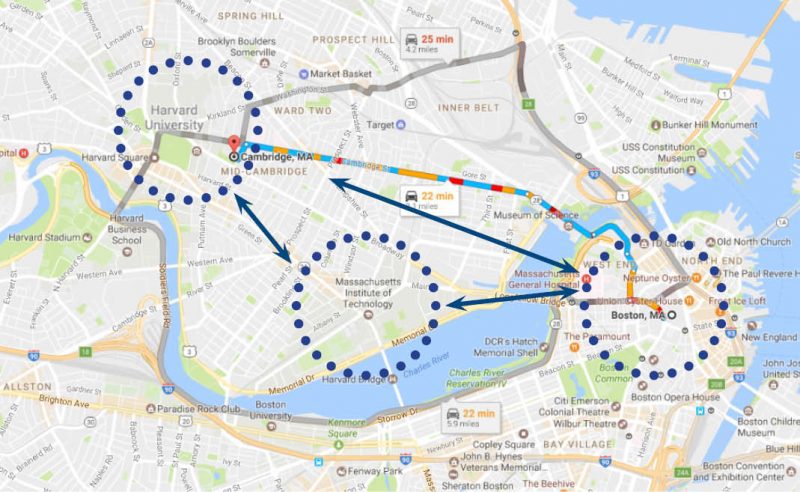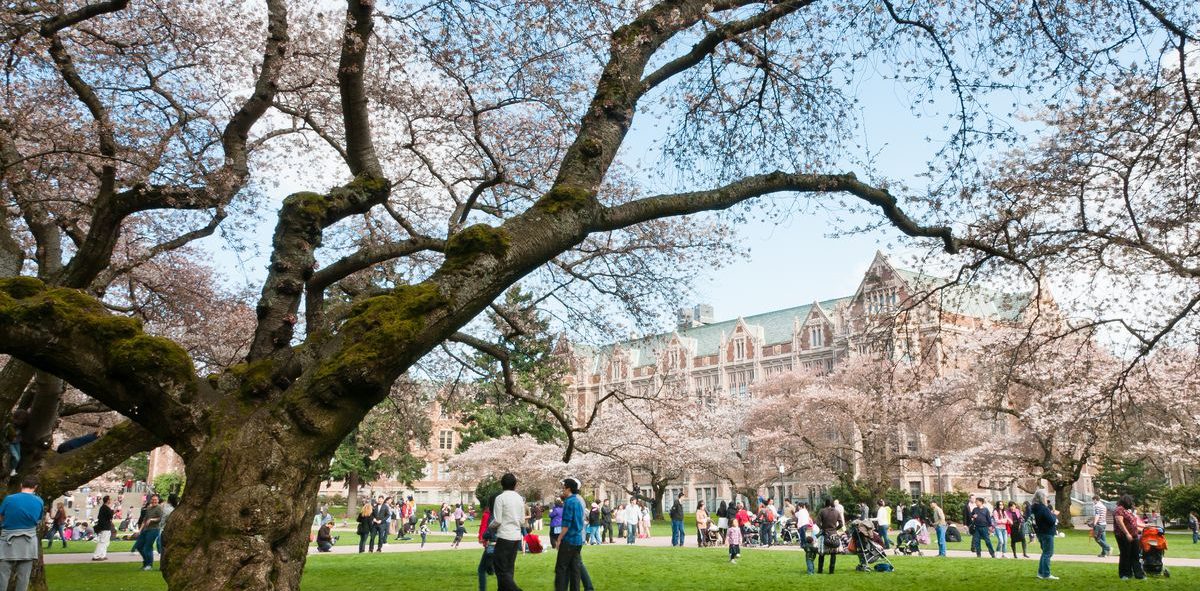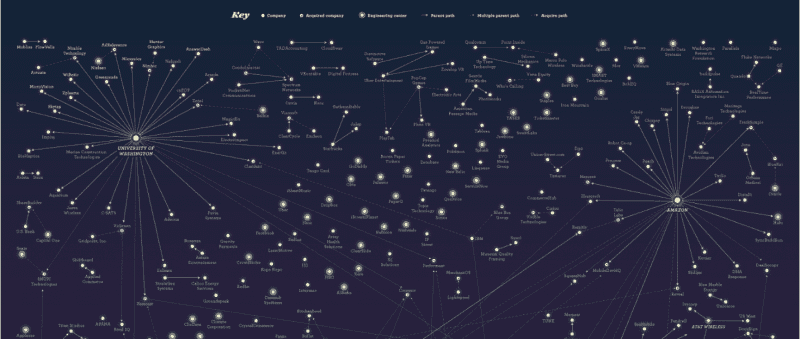To achieve “alpha” – an abnormally high rate of return, more than what is normally expected – one must carefully accomplish two primary goals. Number 1 – make a prediction about the future. Number 2 – ensure that prediction is timely and correct.
Simple, right?
In the world of stocks, some call it “seeking alpha”. In other spheres of investment, it is called an “arbitrage” opportunity. Others just call is smart, prescient investing.
Invest too early, your returns lag the market. Invest too late, your investment return at best meets the market. Invest at precisely the right time – voila, outperformance!
Here’s a tip – invest in Seattle’s University District. The story of why is deeper than you think:
- Light Rail Connecting U-District to Key Neighborhoods & Employers
- Up-Zone Increasing Density & Office Development
- Growth in University of Washington’s Computer Science Program
- Employer’s & Venture Capital Coming to the U-District
- Case Studies: San Francisco & Boston
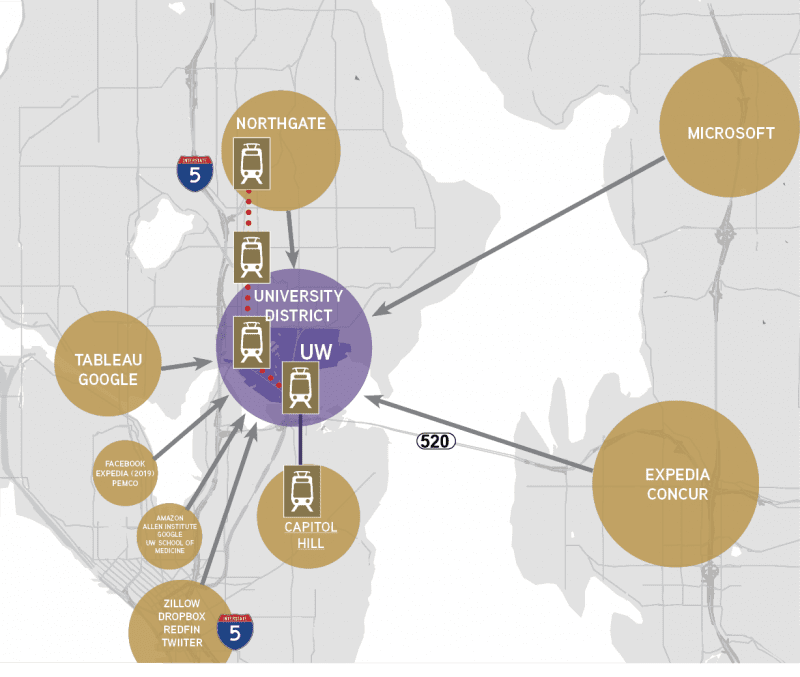
The symbiotic relationship between Seattle and the University of Washington is, in my opinion, one of the best signs of promise for Seattle’s future – as well as that of the University District. Silicon Valley, and today’s vibrant tech scene in San Francisco, wouldn’t exist without the early innovation coming out of Stanford. The word “Internet” was literally coined by a Stanford professor in the 1970s, paving the way for Stanford students to found now legendary companies like Yahoo and Google. And from such companies, literally hundreds followed.
In 2017, our region is experiencing a similar symbiosis. At its crux are connection points based out of both economic and geographic relationships. The following 5 factors ensure a bright and exponentially upward trending future for the University District (as well as Seattle!).
1. Light Rail Connecting U-District to Key Neighborhoods & Employers
This one is obvious, yet important. Today you can hop a train from Capitol Hill and $2.50 and 4 minutes later arrive at the edge of the University District. By 2021, this same train will take you to University of Washington’s doorstep – and as far as Northgate.
For those of you thinking 2021 resides in the distant future, consider that if you file a permit today for a mixed-use building that you may be lucky to open your doors by 2021.
And the story doesn’t end while headed northbound from Capitol Hill. With light rail, the University District Station is a hub at the center of employment centers to the North, South, East and West.
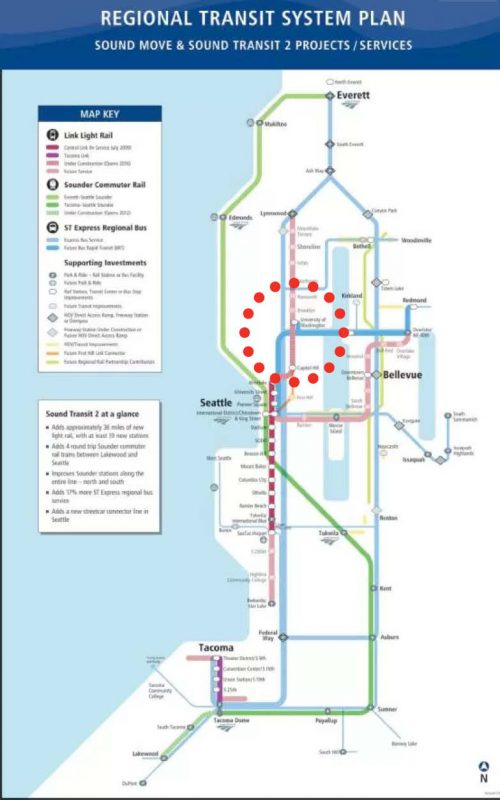
2. Up-Zone Increasing Density & Office Development
We might all know that an upzone was approved for the University District in March 2017, yet it’s impact will be much further reaching that you may expect. No other urban neighborhood has both the economic drivers and capacity for development now bestowed upon the University District.
By comparison, Capitol Hill is a fun, exciting neighborhood, yet without daytime activation it will remain a great spot on the weekends and evenings. Ballard too is a terrific neighborhood – yet it lacks the daytime vibrancy that exists in Fremont – an urban neighborhood that is both land and zoning constricted from a futurist perspective.
While most urban neighborhoods around Seattle are experiencing their fare-share of residential development, few can boast increases in office development – which enables day-time activation, and accompanying, sustainable retail. When we think of true, rich 18-hour neighborhoods, they require each of these elements.
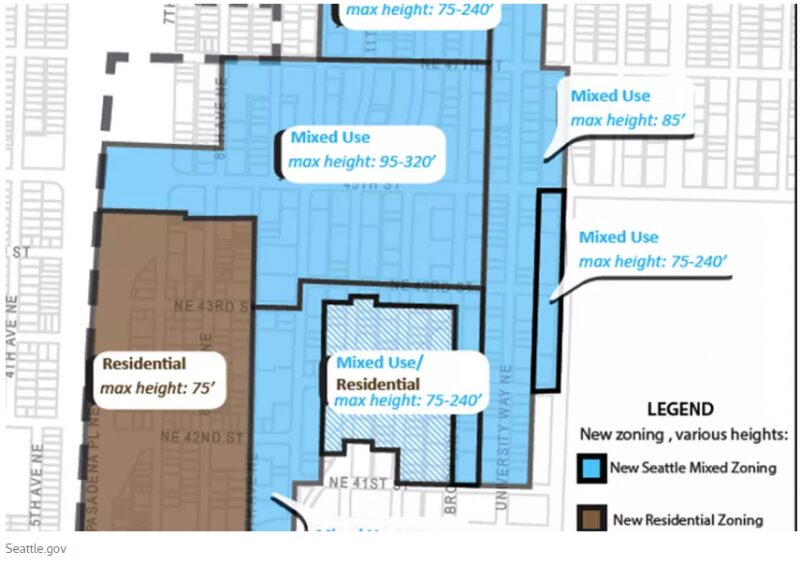
3. Growth in University of Washington’s Computer Science Program
While University of Washington has a solid tech resume of its own, in the past decade it’s seen an even greater focus on the engineering and computer science programs. Last year, a computer science (CS) degree was the top choice for first-year students entering the University, and the school reports that nearly three-fourths of its graduates remain in Washington State – most all in Seattle.
UW attracts elite CS professors like Oren Etzioni and Chris Diorio who not only teach, but who also found startups like Enlearn, Impinj, and Farecast. University graduates are sticking around to start new companies, too, and the flywheel effect builds and builds.
The connection point between professor and student leads to connection points between student and employer and employer and professor – and so goes the flywheel.
This segment of the Seattle Tech Universe graphic tells you everything you need to know (click to expand):
4. Employer’s & Venture Capital Coming to the U-District
Hundreds of recent tech grads from a top-tier school, all in one place? Major tech companies are saying yes, please! Apple recently expanded its engineering operations here to invest in artificial intelligence (AI), and they’re working closely with UW to share resources. Microsoft, Google, and Zillow have all made hefty donations to UW’s computer science program as well.
Employers have a vested interest in attracting top talent from UW – students and professors alike. In the not-to-distant future light rail will provide a direct-link from UW campus to downtown Seattle and its myriad tech employers. Likewise, office development in the University District will promote public-private partnerships spanning both downtown Seattle and the University District.
Similar to Silicon Valley, New York and Boston – where the technology travels, so goes the venture capitalists; they too are not immune from having to chase down talent. The geographic connection between the U-District, Downtown and Pioneer Square is a gap that is quickly closing, and such proximity will continue to promote efficient collaboration.
5. Case Studies: San Francisco & Boston
There are no better case studies for what will naturally occur in Seattle than what occurred in the last 30 years in both San Francisco/Silicon Valley and Boston/Cambridge.
San Francisco & Stanford University
In the Bay Area, the proximity of major “innovation center” universities to San Francisco provided a key connection point between capital and innovation. For instance, nearly the entire industry of coronary stents was invented around Stanford University. The connection point of university to technology was key in Silicon Valley becoming what it is today – which led to the massive employment growth in San Francisco. By CalTrain, the trip now takes under an hour – and with WiFi!
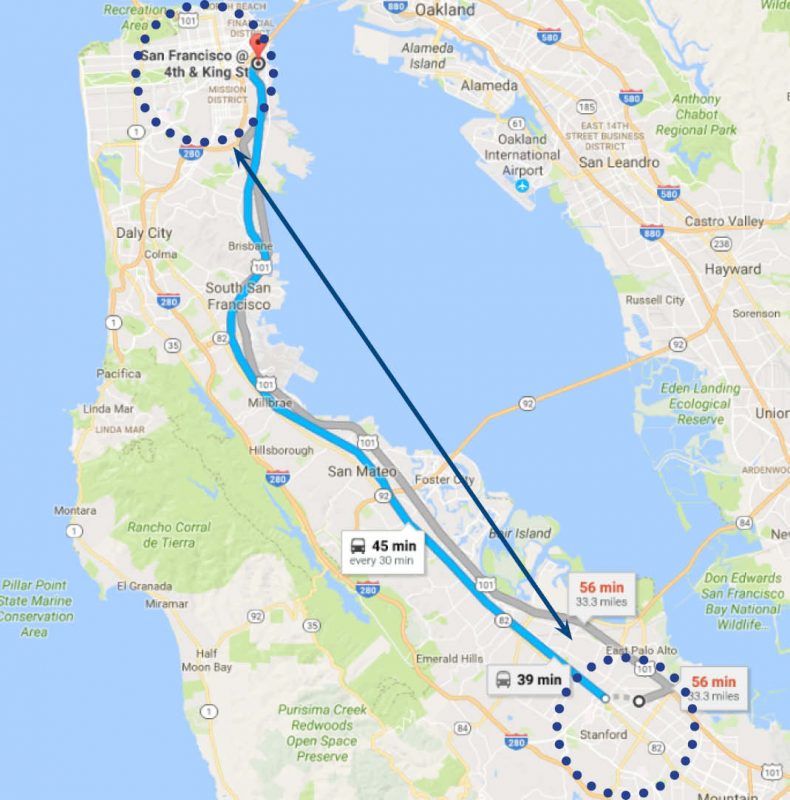
Boston & Cambridge (both Harvard & MIT)
Boston’s proximity to both Harvard and MIT is a key component to its rise as a major tech and innovation employment center. Both schools provide a constant stream of innovation and talent driving that innovation is easily captured by companies located just minutes across the Charles River. As a result, young companies are funded and young students maintain their roots and become young employees.
